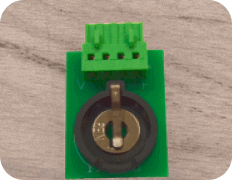
One of the biggest challenges in the development and optimization of battery technology is difficulty in observing what’s happening inside of the battery itself.
However, there’s a new ally in the movement toward the future of energy storage – magnetic resonance imaging, also known as MRI. This technology, which commonly conjures up images of medical diagnosing equipment, allows researchers to diagnose any happenings inside of current lithium-ion (Li-ion) batteries and aids in the development of what may be the battery of the future, sodium batteries.
通过MRI进行锂离子诊断
随着便携式技术的发展和外形因素的变化,这些设备所需的锂离子电池的形状和尺寸也出现了新的挑战。在过去的几年里,关于电池故障的新闻层出不穷,包括过热、肿胀,甚至爆炸。不幸的是,在不破坏有关电池的情况下,检查和诊断电池内可能发生的任何问题几乎是不可能的。
That’s where MRIs come in. The technology is used to measure miniscule alterations in a magnetic field map, which is perfect for analyzing the workings of a battery while it’s in motion.
使用核磁共振成像,研究人员能够确定充电状态和在制造过程中可能出现的各种缺陷或缺失的组件。然后,这些诊断可以在改进电池、降低故障率和提高性能方面得到实施。
用核磁共振监测钠
One of the leading candidates to replace the current Li-ion batteries, sodium batteries, has a promising future in the evolution of alternative energy devices and technology. However, understanding the inner workings of sodium batteries also presents the same problems as diagnosing the processes within Li-ion batteries – you simply can’t observe the innards in motion without destroying the battery.
Fortunately, a process has been developed using MRIs to detect and track the movements of sodium metal ions, allowing researchers to get a look at what’s happening inside of sodium batteries while it’s happening. This observation method offers a way to monitor the interactions between sodium and various anode and cathode materials, as well as the growth of branching structures called dendrites that might cause the battery to fail or even catch fire.
由于钠电池内部的相互作用是可见的,科学家们将能够检测故障并开发出防止这些故障的方法,同时优化钠电池技术的能力。
今天和明天的电池技术
随着核磁共振技术在能源储存和优化领域的这些相对较新的应用,新的进步之路已经在我们眼前打开。
使用核磁共振成像来观察工作电池的内部机制不仅使我们能够在一个全新的规模上看到,而且还使我们能够瞥见能源的未来。
要了解更多关于Arbin如何支持这个未来,请访问https://www.arbin.com/。






